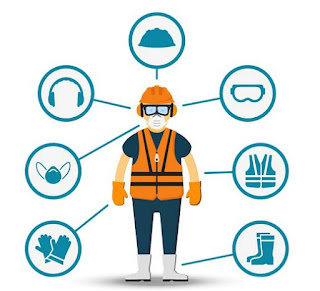11 Characteristics of a Safety Culture in the Workplace
11 Characteristics of a Safety Culture in the Workplace
The phrase "safety culture" is frequently used in C-Suite conversations. Some people applaud this reality, but many are investigating whether safety culture is the crucial component lacking in successful safety.
There is a reason for this; a strong safety culture is difficult to establish and even more difficult to maintain, yet it is the element lacking in effective safety performance.
The question of whether organizational culture or safety culture needs to be improved is another conundrum. Both have a close connection. Corporate culture is characterized as an organization's moral, social, and behavioral standards that are founded on the attitudes, perceptions, and behaviors of its employees.
Similar terms are used to define safety culture: an organization's core truths, concepts, assumptions, attitudes, and practices that are shared among its employees. Success depends on how we act and demonstrate these qualities.
The following examples include characteristics that many effective workplace safety cultures have in common:
1. Safety is the highest priority
While productivity and deadlines are crucial for a business to run smoothly, a strong safety culture will put safety first. By encouraging on-site workers to perform effectively but cautiously rather than rushing and taking short cuts to fulfill deadlines, management may demonstrate their commitment to this aim.
Management demonstrates their value for the health and lives of employees by making safety the top priority in the workplace.
2. Everyone is accountable
All employees are responsible for upholding policies and standards in a safe workplace atmosphere. This means that while management upholds safety standards and is aware of what makes a workplace safe, on-site staff upholds those standards and makes sure their coworkers do as well.
A workplace with a strong safety culture will hold offenders accountable and provide resources to help prevent the problem from happening again.
3. All levels of management understand safety
Despite not working directly with dangerous tools and equipment, management staff nevertheless need to be aware of the company's safety policies in order to positively influence safety communication.
Management may frequently check for compliance, evaluate potential risks, and ask questions to better understand their on-site personnel. Management is more likely to address employee complaints and develop efficient procedures when they are aware of workplace safety.
4. On-site workers influence safety procedures
The procedures and standards contained in those documents will be developed by on-site staff under a successful safety culture, even though management frequently creates the safety documentation.
This is due to the fact that workers who are on-site and interact with tools and equipment frequently are more familiar with the risks associated with their jobs than their managers. Safety papers can be made more effective and complete by asking on-site workers to submit information.
5. Improvement is continuous
Maintaining a supportive, proactive safety culture at work requires constant improvement of safety standards and procedures. Managers often evaluate policies and amend them to reflect new facts, such as switching equipment brands or implementing new production methods. Making safety a top priority at work can be facilitated by timely updates and ongoing procedure improvements.
6. Safety supervisors receive support
Workers in work zones are monitored by safety supervisors to make sure they adhere to all safety regulations. It's crucial to assist safety supervisors in their work if you want to keep a safe workplace culture.
Support might take the form of employees happily following instructions from managers, enforcing safety practices among coworkers, or simply asking questions to better understand safety protocols. By paying attention to and responding to safety supervisors' concerns, management may also provide support.
7. All employees support risk mitigation
Employees who stop work that might be harmful are rewarded for doing so, even if it means losing materials or missing a deadline. Employees who are on-site are encouraged by safety culture to be conscious of, recognize, and handle hazards as soon as they can to avoid potential problems.
Positive safety cultures also value rewarding employees who recognize and implement risk reduction techniques since doing so can make on-site staff feel more confident in their ability to take charge in emergency situations.
8. Safety procedures are accessible
Clear and accessible safety procedures are necessary for a successful safety culture at work. Each company may have its own set of safety paperwork, but many of these are still useful to have on hand. Important safety documentation should be duplicated and kept in locations where staff members may easily access them.
9. Management encourages communication
Positive workplace safety culture is aided through communication at all organizational levels. On-site staff members are able to discuss concerns that management might not be aware of thanks to frequent, clear communication.
Maintaining open lines of communication with on-site staff, providing opportunities for team collaboration meetings, and making it simple for teams to report safety concerns are some ways management may promote communication.
10. Employees attend regular training
A good way to inform new hires and stress the value of maintaining a safe workplace is through routine safety training. Training programs can be tailored specifically for the job or they might be more general, like lectures on chemical processes or electrical conductors.
Access to training for all staff is one of the best ways to change attitudes toward safety. This may entail scheduling training after work or on the weekends or providing paid training opportunities so that staff members can participate in training while they are at work.
11. Employee surveys show positive results
Employee happiness is a further defining feature of a strong safety culture. Employees that have a positive attitude about the safety culture at work frequently feel more at ease and secure while working for their firms.
Results from employee surveys on safety culture can also give management a chance to talk about tactics for increasing employee satisfaction and engagement.

Post a Comment for " 11 Characteristics of a Safety Culture in the Workplace"